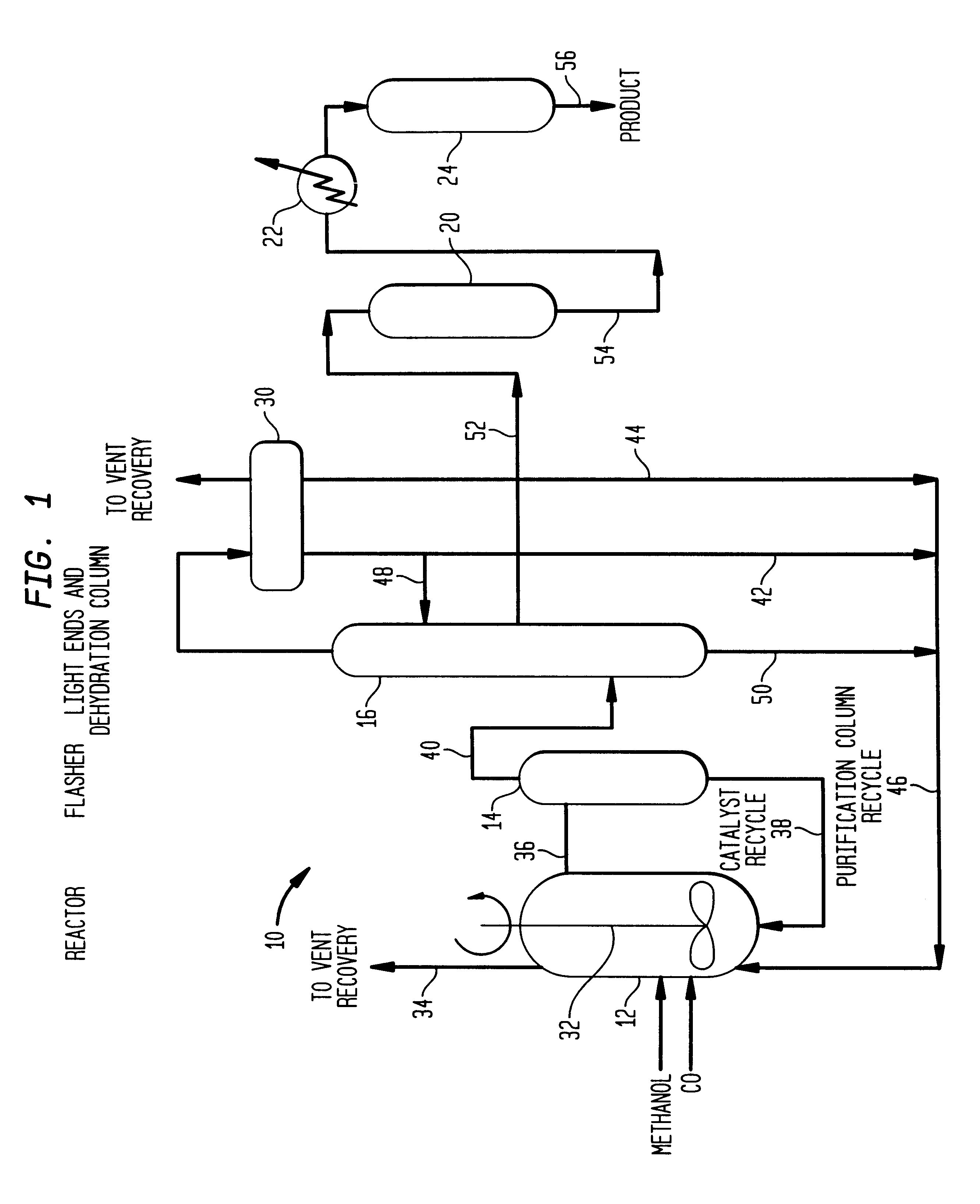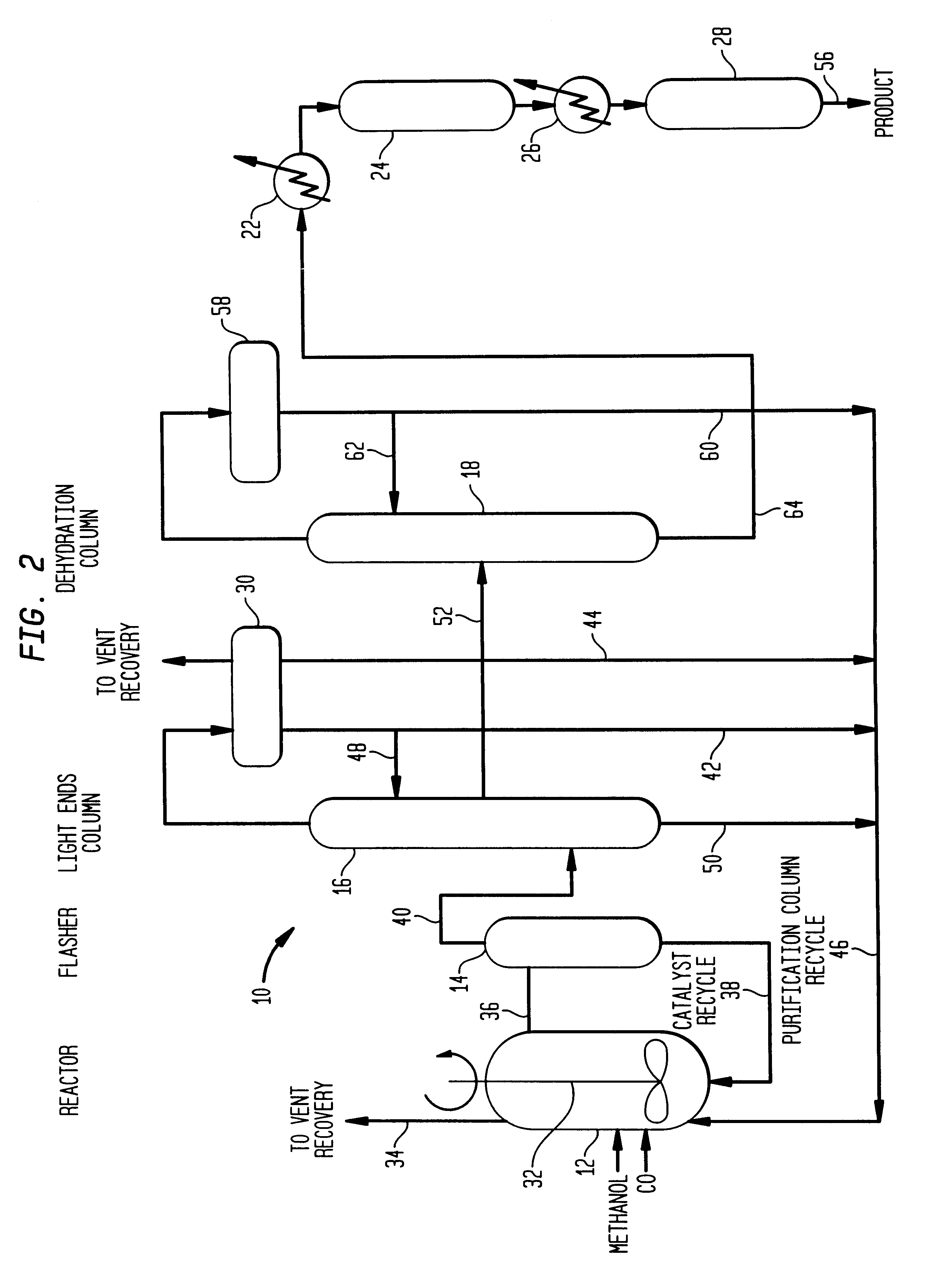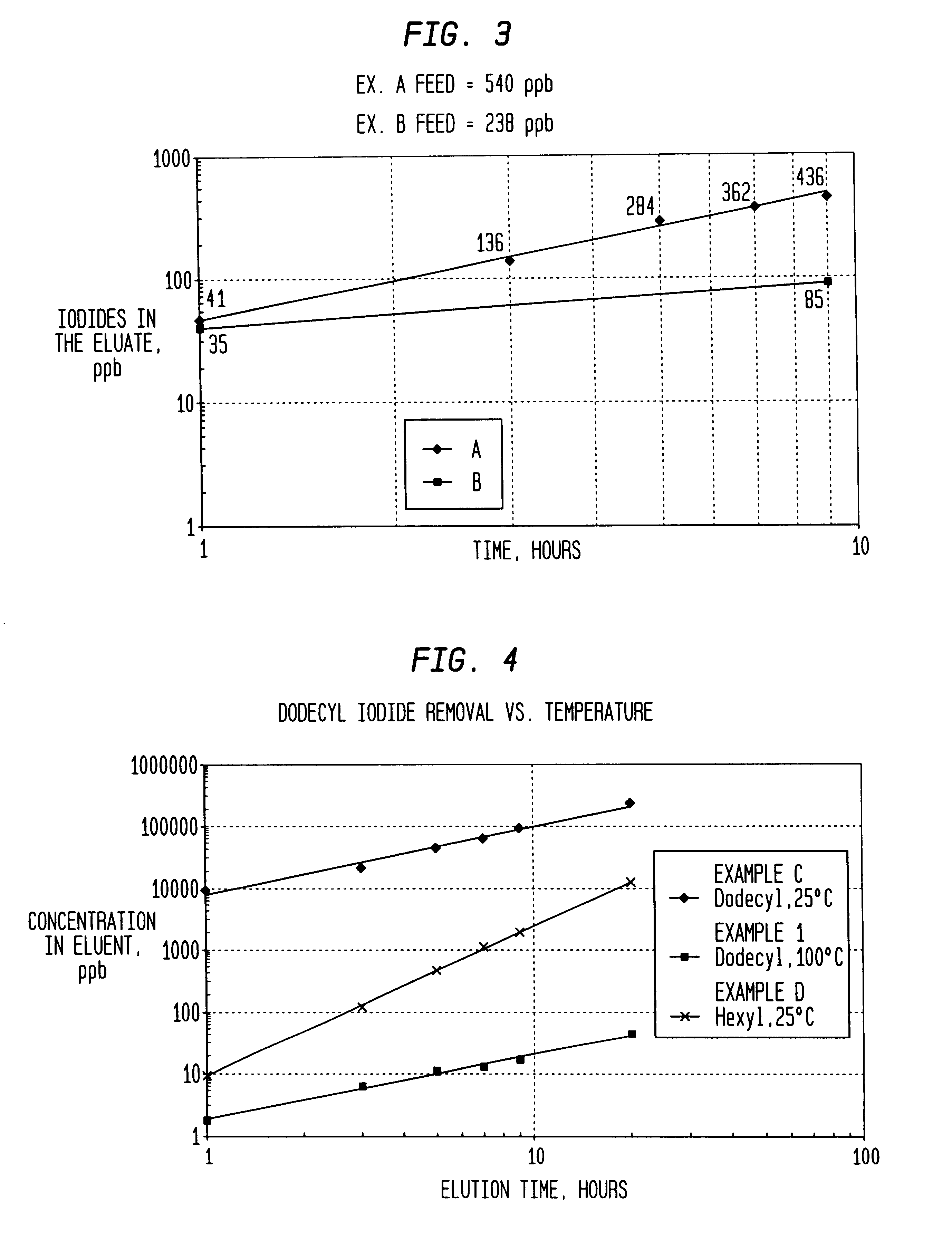Low energy carbonylation process
a carbonylation process and low energy technology, applied in the preparation of carboxylic carbon monoxide carboxylic compound, carbon monoxide reaction carboxylic compound, organic chemistry, etc., can solve the problems of affecting the commercial desirability of the final product, affecting the purity of the product, and increasing the purification train. , to achieve the effect of low energy carbonylation and high purity
- Summary
- Abstract
- Description
- Claims
- Application Information
AI Technical Summary
Benefits of technology
Problems solved by technology
Method used
Image
Examples
examples 2-4
Following the procedure outlined above, performance of a silver-exchanged Amberlyst.RTM. 15 guard bed was evaluated for removal of dodecyl iodide at 25.degree. C., 50.degree. C., 75.degree. C., and 100.degree. C. and for removal of hexyl iodide at 25.degree. C. Results appear in FIG. 6 where Examples C and D also appear for purposes of comparison. Here again, it can be seen removal efficiencies in useful capacities of the bed are greatly enhanced at temperatures above about 50.degree. C.
example 5
Following the procedures outlined above, samples of acetic acid (drying column residue) from a Monsanto type acetic acid plant containing respectively 540 ppb total iodide (Example A), 238 ppb total iodide (Example B) and 259 ppb total iodide (Example 5). The acid was treated, as before, using a silver exchanged Amberlyst.RTM. 15 guard bed at 25.degree. C. and 50.degree. C. As can be seen from FIG. 7, performance at 50.degree. C. was far superior to removal efficiencies at 25.degree. C. Indeed the guard bed removed greater than 99% (nearly quantitative removal) of the total iodide at 50.degree. C.
As part of the present invention it is desirable to control the amount of acetaldehyde carbonyl impurities that are included in the product stream. Some techniques involve the treatment of acetic acid with oxidizers, ozone, water, methanol, amines and the like. These techniques might include, for example, the removal of carbonyl impurities from organic streams by treating the organic stream...
examples 6-9
A continuous pilot plant equipped generally as described above with a 4-liter reactor operating at 1.5 liter reaction volume was used to investigate the effect of hydrogen partial pressure on the formation of by-products while carbonylating methanol. Operating conditions and results appear in Table 2 below. "Column Residue Impurities" refers to impurities in the crude acetic acid product and "H2pp" refers to the partial pressure of hydrogen in the reaction vessel in pounds per square inch absolute.
As can be seen, the impurity profile is improved at lower hydrogen partial pressures in the reactor.
While the foregoing examples demonstrate the reduction of crotonaldehyde and the like, it will be appreciated by one of skill in the art that other impurities and byproducts in rhodium catalyzed carbonylation systems include butane, butanol, butyl acetate, butyl iodide, ethanol, ethyl acetate, ethyl iodide, hexyl iodide and high boiling impurities. The present invention appears to minimize p...
PUM
| Property | Measurement | Unit |
|---|---|---|
| temperature | aaaaa | aaaaa |
| temperature | aaaaa | aaaaa |
| weight percent | aaaaa | aaaaa |
Abstract
Description
Claims
Application Information
 Login to View More
Login to View More - R&D
- Intellectual Property
- Life Sciences
- Materials
- Tech Scout
- Unparalleled Data Quality
- Higher Quality Content
- 60% Fewer Hallucinations
Browse by: Latest US Patents, China's latest patents, Technical Efficacy Thesaurus, Application Domain, Technology Topic, Popular Technical Reports.
© 2025 PatSnap. All rights reserved.Legal|Privacy policy|Modern Slavery Act Transparency Statement|Sitemap|About US| Contact US: help@patsnap.com



